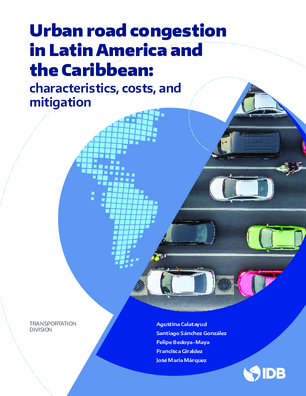Urban Road Congestion in Latin America and the Caribbean: Characteristics, Costs, and Mitigation
Date
Mar 2021
This document presents the first exhaustive analysis for the region about the characteristics and costs of urban congestion in Latin America and the Caribbean, with results for the metropolitan areas of Bogotá (Colombia), Buenos Aires (Argentina), Mexico City (Mexico) , Lima (Perú), Montevideo (Uruguay), Río de Janeiro (Brazil), San Salvador (El Salvador), Santiago (Chile), Santo Domingo (Dominican Republic) and Sao Paulo (Brazil). It uses big data and data science to elucidate the dynamics of congestion in each city and its direct and indirect costs for society. In order to mitigate these impacts, the document brings together five groups of public policy measures: (i) trafficking management instruments; (ii) policies that restrict the use of the private vehicle; (iii) policies that promote the use of public transport, active transport and shared transport; (iv) integrated planning of mobility and use of its use; and (v) policies for the management of urban logistics. It concludes with recommendations on the most adequate measures and the sequencing of the same to reduce congestion in the large and megacities of the region.




